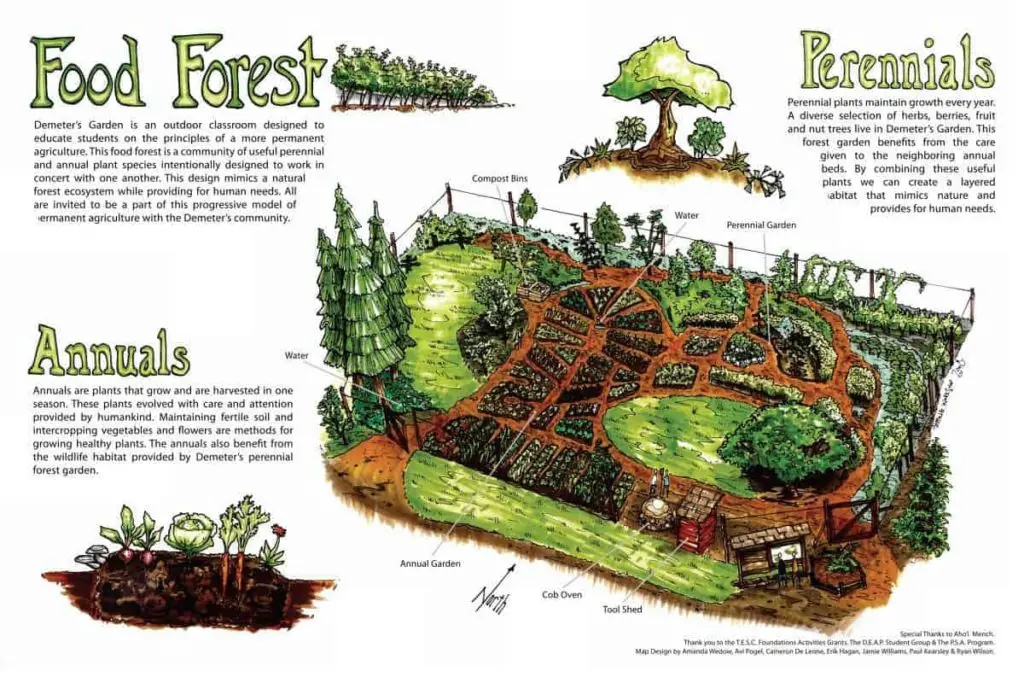Forest gardens, also known as food forests or edible landscapes, are a sustainable and productive way to utilize land while promoting biodiversity. They mimic natural woodland ecosystems by combining trees, shrubs, vines, herbs, and perennial vegetables in layers that work together to create a self-sustaining environment. When designing a forest garden layout, there are several key factors to consider to maximize productivity and diversity.
One of the most important aspects of planning a forest garden is understanding the different layers that make up the ecosystem. The canopy layer consists of tall trees that provide shade and protection for the lower layers. Examples of trees for this layer include fruit trees like apple or cherry trees. Below the canopy layer is the understory layer, which consists of smaller trees and shrubs such as blueberries or currants. These plants can tolerate partial shade and help fill out the space between taller trees.
The next layer is the herbaceous layer, which includes perennial herbs like mint or chives as well as ground-covering plants such as strawberries or sweet woodruff. These plants add diversity to the garden and help suppress weeds while providing habitat for beneficial insects. Beneath the herbaceous layer lies the rhizosphere – plants with underground root systems that can fix nitrogen in soil like comfrey or clover.
Incorporating climbing plants into your forest garden layout adds vertical interest and maximizes growing space. Vines like grapes, kiwi, or hops can be trained along fences or trellises to make use of vertical surfaces while producing fruits or flowers. Additionally, integrating mushrooms into your design can further enhance biodiversity by breaking down organic matter and recycling nutrients in the soil.
When choosing plant species for your forest garden layout, it’s essential to select varieties that are well-suited to your climate and soil conditions. Consider native species whenever possible as they are adapted to local conditions and support local wildlife populations. Mixing both edible and ornamental plants not only provides aesthetic appeal but also attracts pollinators and beneficial insects essential for plant health.
To ensure a successful forest garden design, proper spacing between plants is crucial. Allow enough room for each plant to reach its full size without overcrowding neighboring species. Grouping compatible plants together based on their light requirements and water needs can help optimize resources efficiently within your ecosystem.
Implementing pathways throughout your forest garden will not only provide access for maintenance but also create microclimates that support various plant species’ growth requirements. Mulching pathways with wood chips or gravel helps retain moisture in soil while reducing weed growth – contributing to an overall healthier ecosystem.
Water management is another critical consideration when planning your forest garden layout. Incorporating swales – shallow ditches designed to capture rainwater runoff – can help direct water where it’s needed most effectively within your landscape while preventing erosion during heavy rainfall events.
Integrating elements like ponds or wetlands into your design can further enhance biodiversity by providing habitats for amphibians, birds, insects, and other wildlife attracted to water sources within a forest setting.
Finally…


Leave a comment